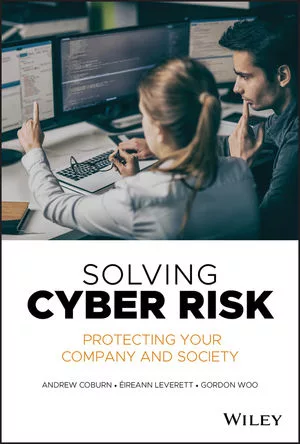Are Your Vacant Buildings Adequately Protected?
Key Risk Management Considerations
Economic downturns typically result in an influx of foreclosed, vacant, idle, and even completely abandoned properties. This affects a range of business sectors—including habitation and office facilities, factories, schools, hospitals and retail.
Economic triggers of abandonment can include inadequate cash flow, multiple liens or liens that exceed market value, predatory lending, and uncertainties regarding environmental, legal, and financial liability.
These triggers often prolong abandonment or relegate a property to permanent disuse.
Vacant buildings are frequent targets for fires and vandalism by juveniles, vagrants, and arsonists; studies have shown that the vast majority of incendiary fires are started by males between the ages of 12 and 25.
Fire, including arson, is the biggest threat to a vacant building. But property owners also face a number of other significant risks, including theft, flood, water damage, windstorms, electrical breakdowns, freezing of water pipes, and mold growth. A lack of proper maintenance can also cause further deterioration and damage that could result in further loss of value or difficulty in making the property tenable in the future.
Closed, shuttered, or idled sites demand as much attention to loss prevention as active facilities; in many cases, these facilities actually require more attention. The expected duration of a shutdown, climatic conditions, and other considerations dictate the type and degree of protection needed.
If the exterior of a building and the adjacent grounds are allowed to deteriorate, the probability of arson and vandalism increases. A rundown appearance may cause a perpetrator to rationalize that no one would lose anything or care if the property were destroyed.
Unoccupied properties, including those intended to be sold and visited only by realtors or security personnel at certain times of the day, are also exposed to similar risks.
These risks can vary significantly depending on the site, any surrounding properties, and the neighborhood in which the property is situated. These factors should be considered when selecting the appropriate risk controls measures.
Assessing and Mitigating Your Risks
If a property is to be shutdown or left vacant or idle for a significant period of time, it is important for ownership to develop a strategy to protect it. This requires an assessment of the site’s risks, threats, vulnerabilities and target areas, and the consequences of each.
A team approach is suggested to outline credible threats; weaknesses in the site’s layout, building, and protection; and any gaps in security and loss prevention programs.An employee or employee group should coordinate and provide loss prevention continuity throughout the shutdown. This employee or group should be responsible for: the risk assessment; security, construction, and maintenance contracts; building and equipment inventory; coordination with local authorities; loss prevention inspections; and implementation of loss prevention programs. Authorization for building access should come from this employee or employees only.
The local public fire and police departments should be contacted to review details of the closing, and the fire department should be given a detailed tour of all site areas. Means of access should be discussed and keys made available to gates, locked doors, and buildings. A revised pre-fire planning session should be conducted to coordinate emergency action and identify special hazards to match the needs of the vacant plant.
Fire Protection
Properly functioning and maintained fire alarm and sprinkler systems play a very important role in maintaining vacant and unoccupied buildings—usually, these are the only forms of protection and notification in the event of a fire.
It is imperative to adhere to a periodic schedule of inspections, tests, and maintenance to ensure the equipment is in good repair. The following are some suggested strategies to help reduce the potential for fire losses at vacant and unoccupied buildings:
- If the building has a sprinkler system, ensure that the system is in full working order and that valves are kept open. This will require supervision, regular maintenance, and testing (as required by the fire code).
- If a building is heated, maintain nominal heat (above 41° F) to prevent pipes from freezing. Supervised monitoring of building heat is advisable. An alternative source of heat (e.g. a portable gas heater) should also be kept ready, at another location, for use in case of heating failure. Portable heaters should be used only in emergency situations, and not as the permanent source of heating.
- If the building is not heated and sprinklers are not required, all water piping should be drained and shut off. The sprinkler riser should be kept from freezing by heating the base of the riser or, alternatively, water should be shut off at the property line.
- Remove unnecessary combustible materials, both inside and outside of the building.
- Remove excess vegetation and shrubs from the property.
- Maintain the outward appearance of the building to deter arsonists and vandals.
- Remove all waste materials from the premises.
- Maintain clear access routes to the building to enable fire department access.
- Power down all equipment and disconnect all unnecessary power supplies.
Physical Protection and Supervision
It is important to maintain physical protection and regular supervision of vacant and unoccupied properties to prevent vandalism and unauthorized entry. Owners or management should take the following actions:
- Conduct regular (weekly, at a minimum) visits to the property to ensure all is in order. All areas of the building and the outside property should be inspected. Logs should be kept of these visits; use of a checklist is advisable.
- Enable security systems to supervise the property. This includes monitored electronic intrusion alarm systems (with audible local alarms). Also consider using security cameras and posting signs to indicate that a property is under surveillance.
- Ensure all doors and unprotected openings (e.g. windows and skylights) are locked and secured.
- Lock all inside doors that separate building sections.
- Provide adequate external perimeter lighting at night.
- Consider boarding up the property, subject to local authority constraints, using timber of adequate durability or corrugated iron. For long-term vacancy, the use of brick may prove to be a cost-effective solution.
- Maintain proper snow removal practices in winter, including removing snow from roofs to prevent collapse. This is of particular importance if the building is not heated (meaning that snow on the roof will not melt quickly).
- Ensure that key personnel are on-call to assist in emergency situations, such as fires, boiler shutdown, snow removal, or other situations.
Insurance Coverage
Most property insurance policies cover damage to the property as a result of natural and man-made disasters such as fire, civil unrest, and windstorms (hurricanes and tropical storms). However, once the property becomes vacant for a period of time as specified in the policy, the insurance company may be able to:
- reduce the coverage available;
- reduce the limits payable in the event of a loss;
- amend the overall policy terms and conditions; or
- terminate the policy entirely.
While policy provisions vary as to the period of time a location can remain vacant, insurance companies may be able to restructure the program after a length of time. In some cases, the primary insurance may continue only if the property is being sold or under renovation for future use, or if the owner pays a fee to reinstate the prior coverage.
Property owners should also be aware of the liability issues that may arise from unauthorized entrants who are injured on an abandoned or vacant property. It is important for owners to discuss these casualty considerations with their risk managers and insurance advisors.
Preserving the Value of Idle or Vacant Property
Vigilant loss control and security, as well as emergency response programs are of paramount importance during a plant's idle or vacancy period and can help maintain its value. The degree to which these programs are applied and maintained depends on many factors and circumstances. Many of the potential exposures faced by idled or vacant sites covered in this paper are suggestions for the more common precautionary measures necessary to preserve a property and other company assets. Specific control measures are best determined by conducting a detailed hazard, risk, and security assessment, which should then be followed by implementation as part of an integrated risk management program.
For more information, contact Marsh at at.risk@marsh.com or 866 9AtRisk (928-7475).
Looking for a reprint of this article?
From high-res PDFs to custom plaques, order your copy today!







